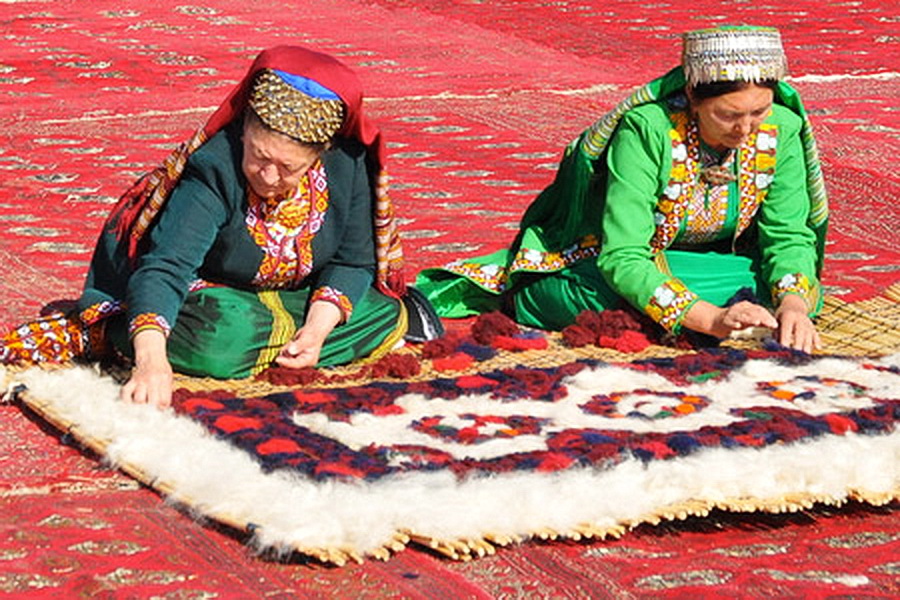Turkmen Carpets

Turkmen carpets have long played a crucial role in Turkmenistan culture, having first been woven out of a necessity which sprang from the harsh reality of everyday life. In historic times, nomadic tribes owned several different types of carpets, each of which held a unique purpose. Prayer rugs, decorative rugs, carpets used for family celebrations and carpets which doubled as wardrobes and beds were all important articles for the nomadic Turkmen. Carpets served as decor for traditional yurts while also helping to retain warmth in cold weather. They were used to divide a large room into separate quarters, were slung across the backs of horses and camels and spread out in open fields to transform them into a place of comfort and familiarity.
The transition of the Turkmen to a sedentary lifestyle provided the needed conditions for developing this ancient craftsmanship into an applied art. Carpet weaving skills were passed down from mother to daughter for generations, who in addition to following specified techniques were careful to pay close attention to the selection of quality materials and dyes. From the outset, Turkmen carpets were created to last for centuries.
The carpet is as much a symbol of Turkmenistan as tulips are of Holland and cigars of Cuba. According to one theory, goli (Turkmen rug patterns) originated with Oguz Khan, a legendary hero who is considered the progenitor of the Turkmen people. Some experts believe that the symbol of the sun is at the heart of the goli, for its inclusion in the Turkmen carpet began thousands of years ago when sun worship was prevalent in the land.
Defining characteristics of Turkmenistan rugs include strict geometric patterns and varying shades of red. Yet despite these common elements, each tribe in Turkmenistan employs an individual design and unique ornamentation that is not duplicated elsewhere. A key element of the Turkmen carpet is a special seal whose characteristics vary based on the carpet’s tribe of origin and the place where it was woven.
A carpet from Turkmenistan is a genuine work of art. It takes an astonishing amount of time and incredible skill to complete just one carpet, and for this reason they are not cheap. Consider that in one hour, the average weaver ties at least 3000 knots and beats the rug countless times with an iron comb. In one shift, thousands of blows will be made, while the weight of the comb with the fibers can exceed 1 kilogram. Such work will be repeated day after day for weeks and months on end. When admiring elaborate Turkmen carpets or considering one for purchase, one should remember that it is a masterpiece designed with great effort.
Turkmenistan’ Ministry of Carpets is a state entity that now oversees the export of handmade Turkmen carpets and partners with galleries around the world for the exhibition of select national rugs. Visitors to the country can see more than 200 samples of antique Turkmen rugs in the Turkmen Carpet Museum in Ashgabat, including one of the world’s largest carpets which measures 301 square meters and is listed in the Guinness Book of Records. Every year on the last Sunday of May, Turkmenistan celebrates Carpet Day at the museum with special ceremonies and exhibitions.

